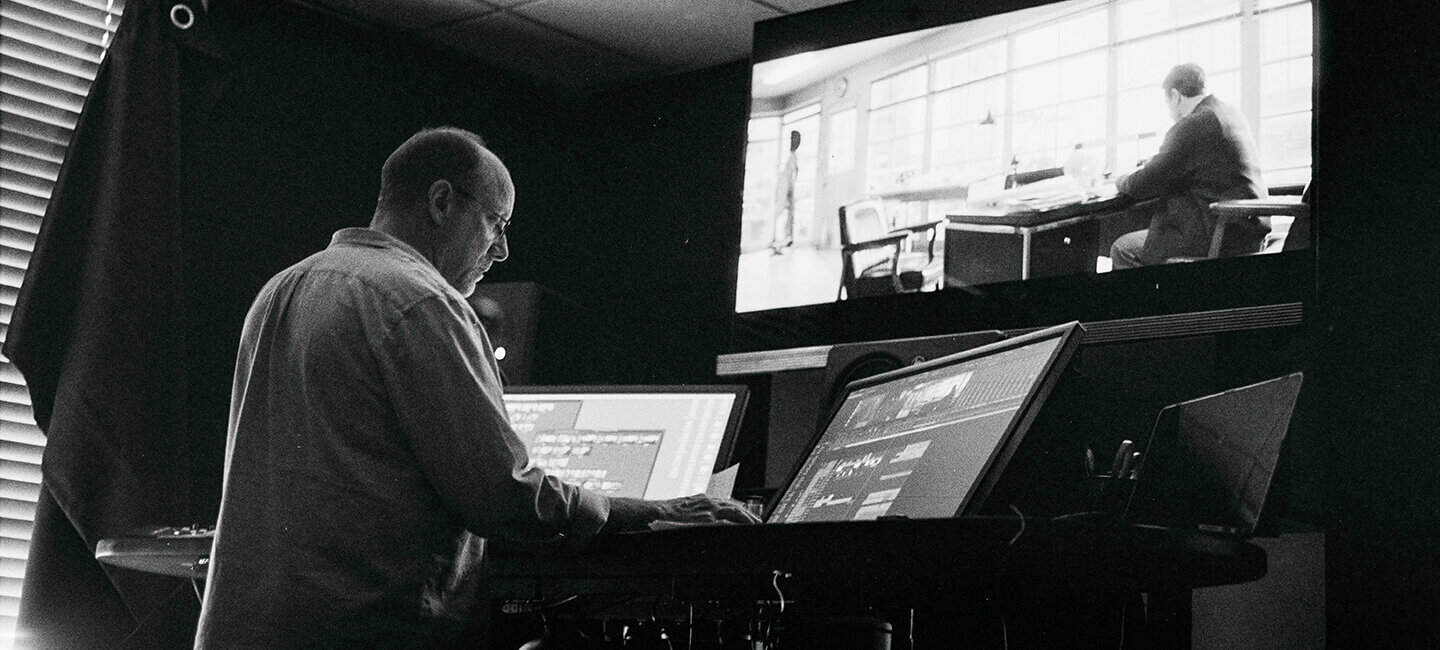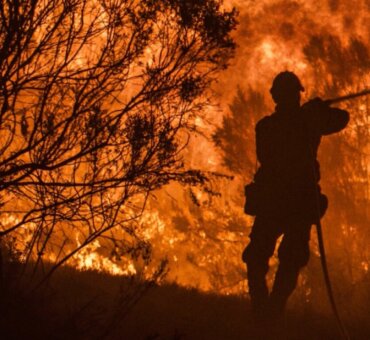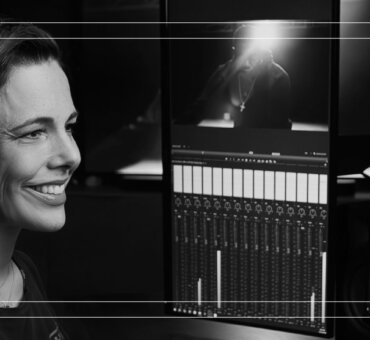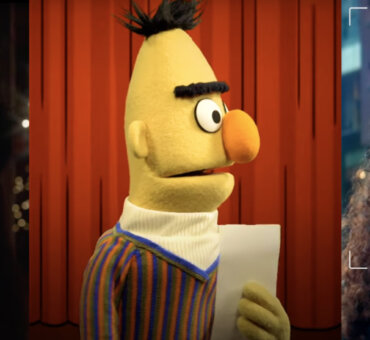Editing, in many ways, works like a magic trick. You’re using spectacle and distraction to achieve your true goal—to make the audience feel something. Or, as Ford v Ferrari Co-Editor Michael McCusker puts it, you’re making your audience “emotionally smart.”
“A lot of times we talk about an audience being smart. And they are smart, but when a movie works they’re emotionally smart,” he told us. “Meaning, they fill in the ideas of a movie simply because they’re feeling it themselves.”
And this is the true magic trick of Ford v Ferrari, a film that has nabbed both Michael and co-editor Andrew Buckland an Oscar in the 2020 Academy Awards. It’s a film that masquerades as a racing film, but achieves true depth in a way that it speaks to motivation, passion, and obsession. Much of this was achieved through the masterful editing of this film between Andrew and Michael, along with Director James Mangold.
In our interview, they share thoughts on how to build true tension in your action scenes, why car movies connect with audiences, and how they used pre-vis to create the captivating Le Mans climax at the end of the film.
Here are Oscar-winning Editors Michael McCusker and Andrew Buckland:
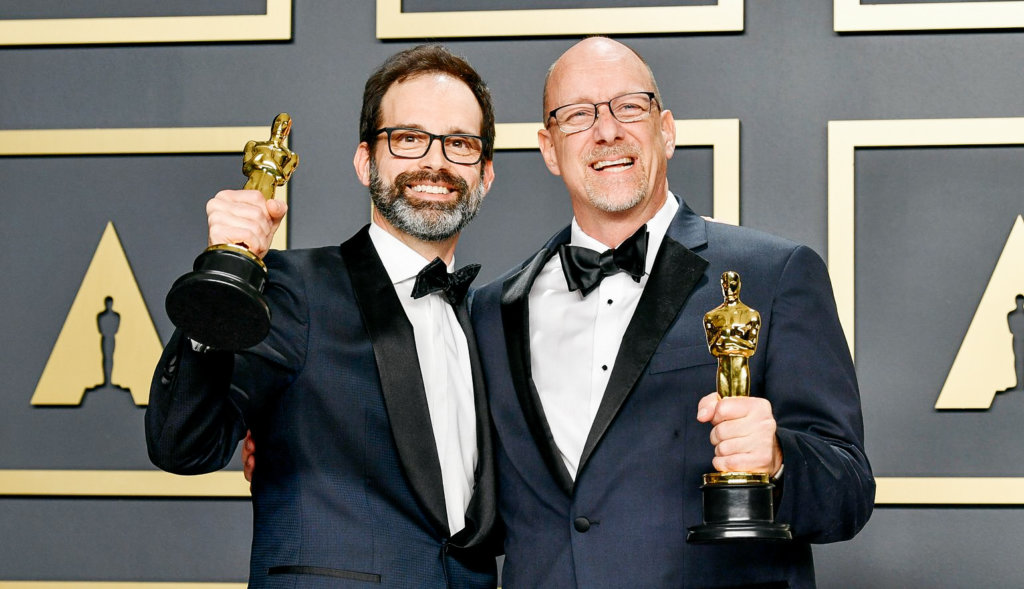
Filmsupply: How did the two of you work together on this film?
Michael McCusker: There wasn’t a hard set of rules, like, “Here’s your reel and here’s my reel.” We don’t alternate scenes and Jim [Director James Mangold] doesn’t want to work in that way. There are little scenes and there are really big scenes. Sometimes you get engrossed in a scene and it’s helpful to have someone else working in the room. In this day and age, collaborative cutting rooms are more in vogue. The schedules are so short and the movies are only getting more complex.
Andrew Buckland: It’s a wonderfully collaborative environment with Jim. He’s one of the few directors that has a very clear perspective—he knows what it should be, what he wants, but sometimes you can surprise him. As an editor, it can be very rewarding in that sense.
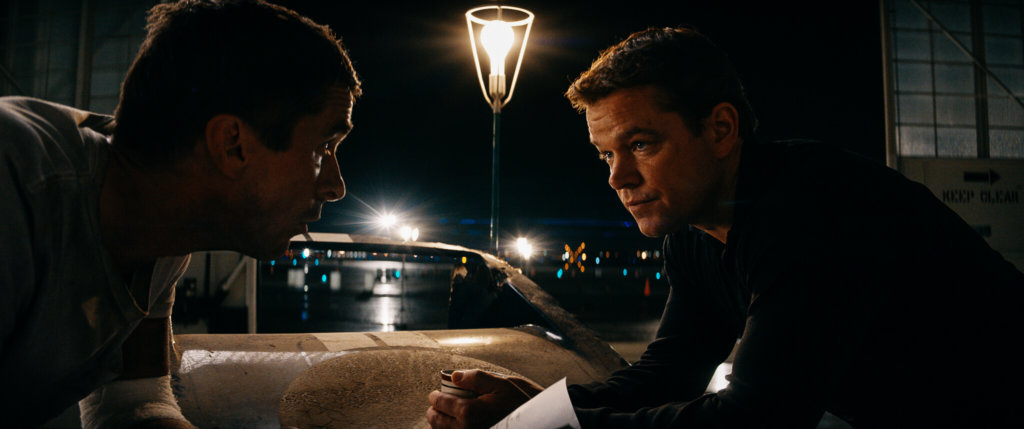
How did you surprise him?
Andrew: Well, we weren’t exactly butting heads on the Willow Springs scene, but we were really wanting to find a different direction.
Mike: Yeah, that’s the very first race. We knew we needed a way to make it seem more expansive and communicate more than our first iteration. While Jim was still shooting, he was happy with what he saw, but when it was put together at first I don’t think it communicated the passage of time. It’s a day-long race, and I don’t think we were really feeling that.
We sat down and took a pass at it. We thought, Why don’t we take our best shot and see if we can expand on the scope, make it feel like a bigger scene? So, we did. We showed it to Jim and he was happy with it. That just comes out of years of working with Jim, just knowing he’s going to want more. He wants us to take an angle. The worst thing you can do with any director is to not have a very strong angle and point of view in the scenes that you’re cutting. It’s better to fail with a very strong thesis than it is to not have a thesis at all. You may not get it right, but at least there’s a point of view.
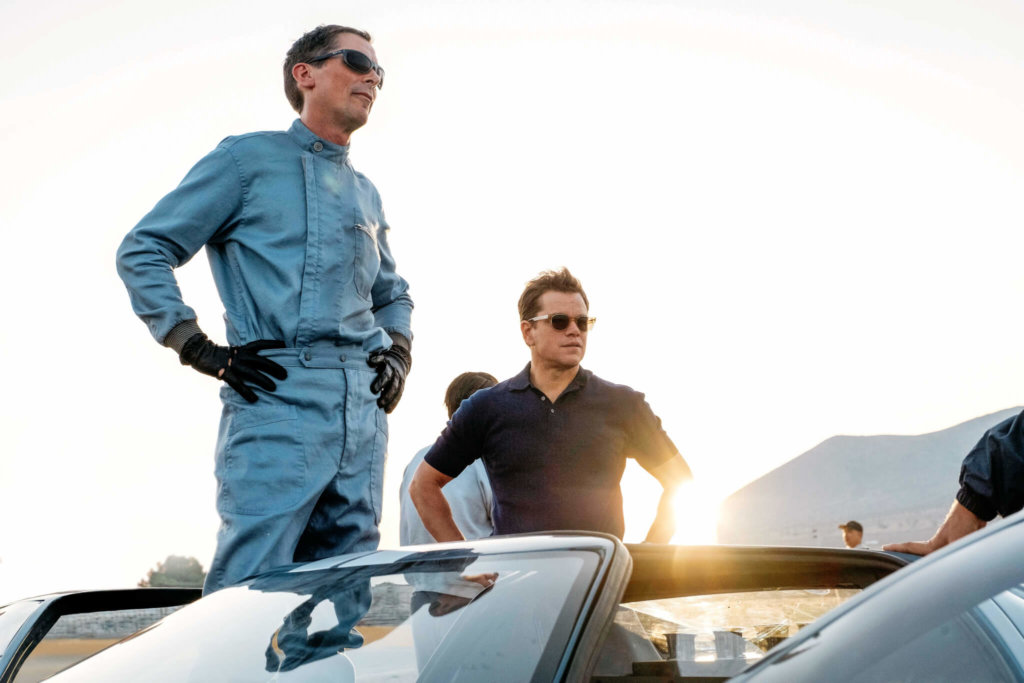
Speaking of point of view, how did you develop that from an editorial standpoint?
Andrew: We were in sync together about developing the character relationships from the beginning of the movie, trying to develop this story, the narrative dynamic that would drive everything later on in the film. So, we spent a lot of time with the characters. I think it pays off in the end when we hit Le Mans. We really understand what these characters are going through—their hopes, goals, and struggles—and it really elevates the scene.
Mike: One of the things that was tricky about the movie is that there’s the idea of a rebel gang that gets together all across America to win Le Mans. That’s one thing. But, there’s also the idea that this is Ford’s endeavor. We had to have the rebels pull Ford into the future by getting through a bureaucratic corporate system. It creates a lot of tension in the movie, because the very company that’s affording our heroes the opportunity to raise the stakes are acting as an antagonist in a way, too.
We were very aware of the fact that we didn’t want to paint Ford, and the executives at Ford, as cardboard cutouts. They have their own dreams, wishes, and reasons for doing this. As Drew said, when you get to the race you understand what’s at stake for them as much as you understand what’s at stake for our two main characters. To do that, you have to give humanity to those guys too. I think the scenes like where Ford is taken out and driven around like a maniac, and then bursts into tears, really helped accomplish that.
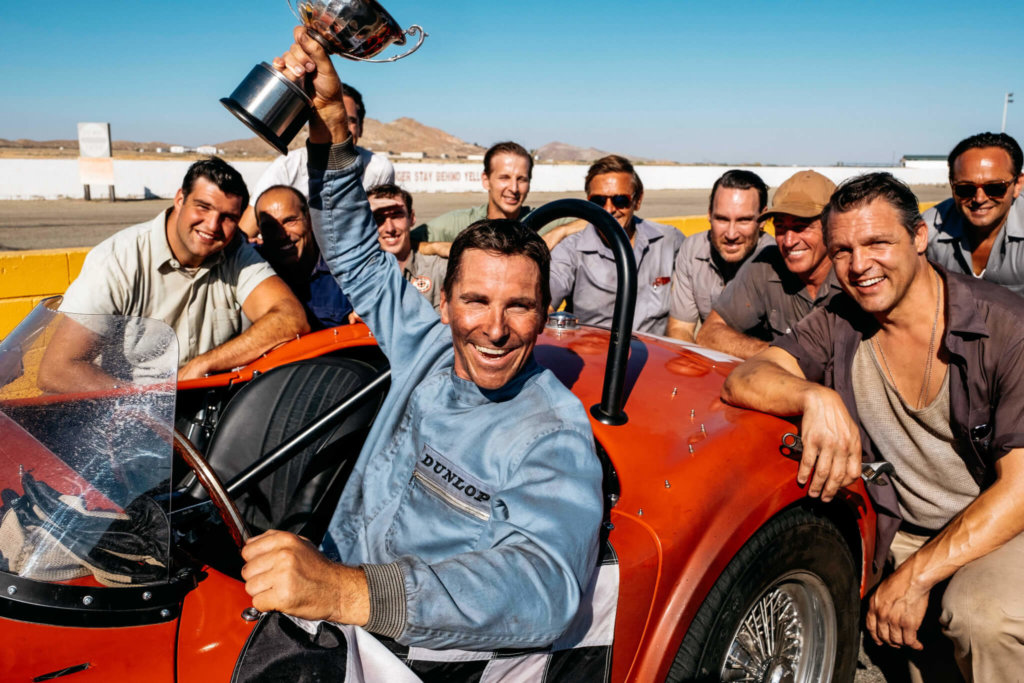
Then, when you get to Le Mans, there’s so much more tension because you know these characters so well.
Mike: Absolutely. You have to deliver on the spectacle. A lot of times we talk about an audience being smart. And they are smart, but when a movie works they’re emotionally smart. Meaning, they fill in the ideas of a movie simply because they’re feeling it themselves. If we’re making them feel like one of the characters, they’re there, and you get to have this extraordinary race.
People have told me, “I felt like I was in the car. I was on the edge of my seat for 30 minutes.” It’s great. All that stuff is great, but it’s because you’ve made investment into these characters. You’re rooting for them. Somebody, kind of jokingly, asked us recently, “What’s it like to shoot a car movie with actual characters in it?” Really, I think it’s a character movie with cars in it. That’s the theme of the movie.
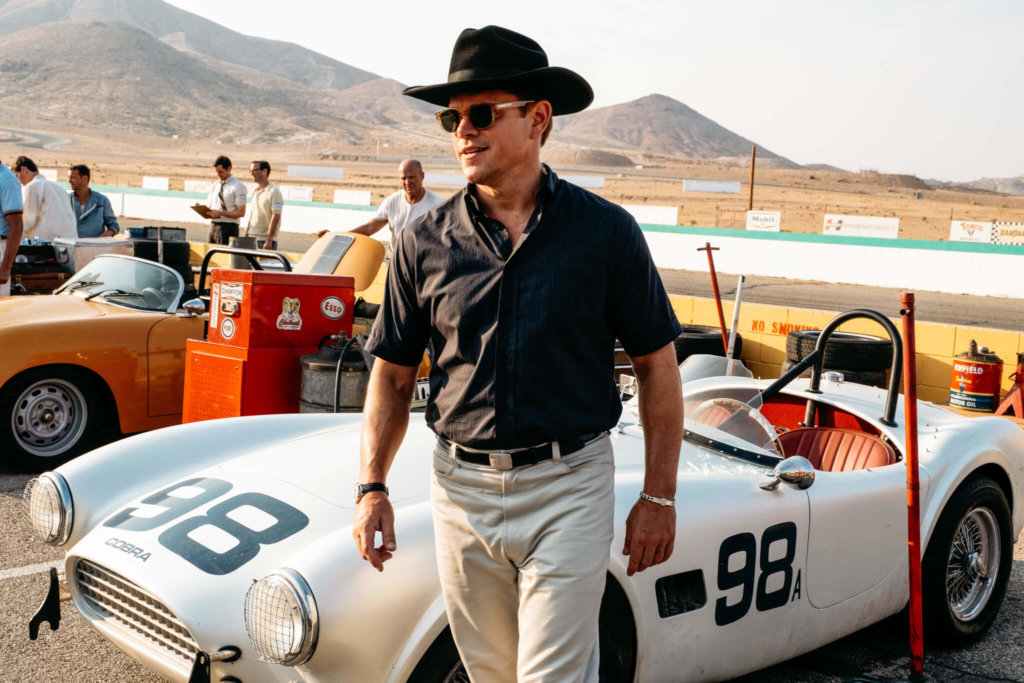
Once you get to the spectacle, though, how did you deliver on it?
Mike: The three races in Ford v Ferrari were shot in all different types of strategies. Willow Springs was shot in a more traditional way. We simply boarded it out, they shot it, and we had to figure out how to put it together. Daytona was partially previs-ed in a general sense, but again, they went out and followed some of it, but then they made stuff up and had to adapt on the ground.
Le Mans was different. Le Mans was so complicated that we previs-ed the shit out of it. I was working on the movie a couple months before production, cutting and helping find that sequence. There was just so much at stake, and there was so much going on in the sequencing that we needed a real battle plan.
I wouldn’t say we cued exactly to the previs, but very closely, and it wasn’t simply a proof of concept. It became a tool for actually shooting sequences and knowing what the production units were going to go out and get. As an editor, you sit down and design these shots. You’ve got to have a good idea of whether or not the shot’s going to really work or not.
Jim has an allergy to stunt shooting. I don’t mean with stuntmen, I mean shooting crazy shots for the sake of shooting crazy shots. That’s where he directed his previs, and that’s where we kept ourselves concentrated. I made a strong appeal to him that I thought he should stunt shoot a drone shot of the course, so we could have some way to communicate scope. He refused to do it, because he knew he wouldn’t use the shot. And, in the end, we didn’t need it.
Why not?
Mike: We wanted to be right next to the character, next to his face, and experiencing the stuff he’s seeing. Even in the action moments, they’re always happening right next to the character. The scope is being communicated through a point of view. It’s a lot of work, a lot of design, and going out there and executing the shots, and we got some great footage. I mean, Phedon Papamichael did a great job. The movie’s beautiful, and it worked.
Is working with pre-vis more or less difficult, since it’s almost like editing in reverse?
Mike: I often joke that if Ford v Ferrari were shot 30 years ago, we’d still be cutting it [laughs]. Without previs, they’d have the story, but to figure out the dramatic points they’d have to be out there doing it, and a lot of that comes down to cutting.
As an editor, you’re not any less involved or more involved than you used to be. The danger with previs is that you can’t be less involved. I’ve worked very hard over the last few years to basically push my way in the door on movies that follow a lot of previs sequencing. To Jim’s credit, he’s allowed me to be a part of it.
I get to look at the sequences, make comments, help design shots, and then cut it. Your design instinct is not happening in the moment of production, it’s happening previous to production. That doesn’t preclude the fact that they go out and they shoot something. You have a plan, and they don’t get it, and that happened plenty on this movie. We had a lot of things we had to try to think up in the moment. But, I think it’s really important that an editor is involved in these sequences as early as possible.
How did you make these racing scenes feel so visceral?
Mike: I think it’s about what we did with the character, not losing the through-line and the spines of the characters. For the racing, it was really cool, but we didn’t go for the wild-ass shots. Our audience knows what it’s like to be in a car, and I think that’s why racing works so well because it’s not gimmicky. It feels real to people.
Part of the answer is philosophical, which is to say that most people drive. They don’t have superhero suits and travel to outer space to save the world, but they do drive. Ford v Ferrari was tactile, in a way, where people will tell me, “I watched the movie, got in my car, and drove home really fast.” It’s an experience they can put their hands on.
Editor’s note: This interview was conducted prior to McCusker + Buckland receiving the Academy Award for Best Editing.
The photo of Mike McCusker in the header was taken by Anthony Dixon.
